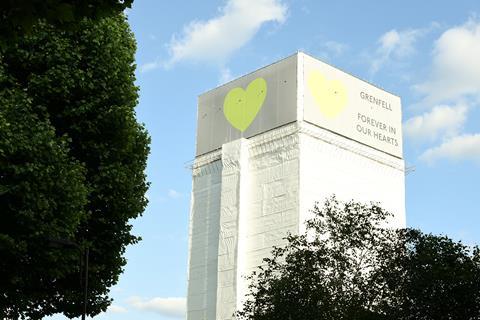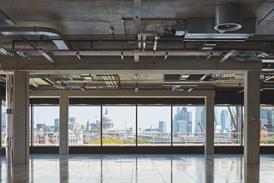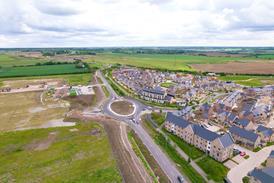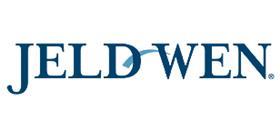
Sponsored by JELD-WEN UK, this module explores how to specify fire doorsets with confidence in the light of recent changes to fire safety legislation
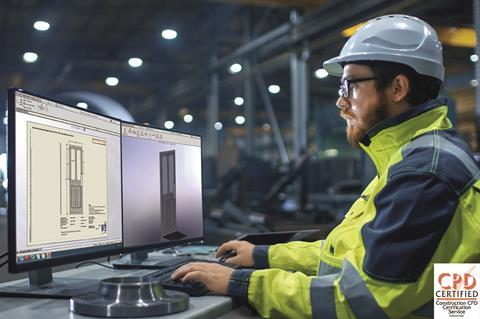
Fire doors are a vital safety feature in many projects, but recent regulatory and technical changes have made correctly specifying these safety-critical elements more important than ever. In this module we look at recent changes to fire safety legislation; consider why pre-assembled fire doorsets are often the best solution; and learn about relevant British and European standards. We also explore third-party testing and assurance schemes for fire doors and look at the part that fire door specification must play in the new building safety regulatory regime.
Learning objectives:
- Distinguish between fire door leaves and complete doorsets and understand why specifying doorsets is best practice.
- Compare relevant British and European fire door testing standards and understand the role of third-party certification.
- Understand the part that fire door specification must play in the new building safety landscape.
Fire door basics
Fire doors are an essential part of passive fire protection in many residential and commercial buildings. With a fire-resistant core – usually made of solid timber, engineered timber or mineral board – they are designed to resist fire and maintain their integrity for a specified period of time, slowing the spread of smoke and fire allowing crucial time for evacuation and emergency response.
In most applications, self-closing devices are mandatory to ensure a fire door remains shut at all times. Electronic hold-open devices linked to fire alarm systems are a common solution in situations where a fire door needs to remain open. If the fire alarm activates, the electronic hold-open device releases and allows the self-closing device (door closer) to operate and close the door. Intumescent seals are either fixed within the door edges or within the surrounding frame/lining. These expand under heat to block fire and may also have cold smoke seals – flexible fins or brushes to prevent smoke from spreading during the early stages of a fire. Smoke control is critical, as smoke inhalation is the leading cause of fire-related deaths. Ultimately, by containing and slowing the spread of fire and smoke they contribute to protecting both lives and property,
Door vs doorset
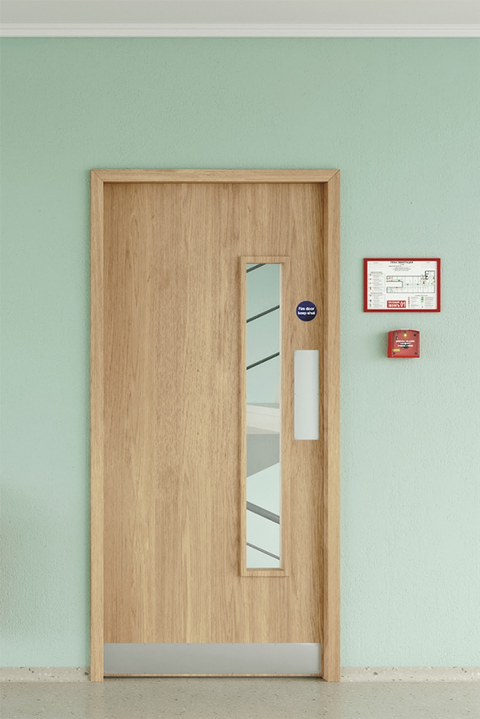
What is often referred to as a door is technically a door leaf – the main panel that swings open to let people pass through. It does not include the frame, hinges, handles or other hardware. A complete doorset, by contrast, comprises the leaf plus frame, door furniture and all essential hardware such as hinges, linings, locks, doorstops, fixing brackets and any applicable glazing options.
Doorsets are manufactured as ready-to-install complete units. In some instances, components are specified individually (ie surface mounted hardware) and fitted on site. As regulations and technology have become more complex, industry best practices have shifted towards the supply of complete, manufacturer-made doorsets. These provide a more reliable, compliant and efficient solution compared to ad hoc on-site assemblies.
Several reasons support this approach: mis-specified or incompatible components can severely impact fire and smoke performance. If just one component fails – whether due to poor specification, incorrect installation, poor maintenance, damage or improper use – the effectiveness of the whole fire door assembly is compromised, which could put lives at risk.
Manufacturer-made and third-party-tested doorsets reduce that risk by ensuring correct hardware placement and correct gaps (determined within the relevant certification scope) between the door and frame.
Cost pressures can lead to short-term specification choices based on economy. A seemingly simple item such as a hinge can have significant implications, but specifying a third-party-certificated fire doorset assembly ensures the correct specification for the performance required. Products that require fire, smoke and security performance backed by Secured by Design must be third-party-certified and delivered to site as a complete doorset. Choosing incompatible hardware solely on cost grounds can compromise fire safety.
Specifying a complete doorset from a manufacturer who provides third party certificated solutions helps to ensure quality and compliance to building regulation are being met. Reputable manufacturers (with third-party certification) have already done the hard work and offer complete doorsets designed to meet a whole host of dual-performance requirements – a result that would not be achieved by specifying your own collection of door hardware.
Legislative changes after Grenfell
The fire safety regulatory context has changed significantly post-Grenfell (2017). The focus is now on long-term safety, defined responsibilities and accessible safety information for higher-risk buildings.
Three key pieces of legislation are particularly relevant:
- Fire Safety Act 2021 clarified that flat entrance doors and external walls are in scope under the Fire Safety Order for multi-occupier buildings – making them a fire risk control measure that must be managed accordingly.
- Fire Safety (England) Regulations 2022 require quarterly checks of communal doors and annual checks of flat entrance doors, and mandate resident guidance on fire doors. These duties have a knock-on effect – making the inspection and maintenance of doorsets a design issue, not just a post installation issue.
- Building Safety Act 2022 expanded duty-holder responsibilities, introduced the accountable person, and established the Building Safety Regulator and the requirement for a “golden thread” of digital safety information.
The golden thread is a single, accurate digital source of building safety information maintained across the building lifecycle, accessible to residents, tradespeople and emergency responders. Materials, maintenance and modifications to a building must be documented accurately, and the building’s responsible person is expected to use the information proactively to identify potential risks or hazards and take corrective action. The aim is to make the right information available at the right time, to the right people. The hope is, if everyone is working from the same “building manual”, maintenance errors that could have adverse safety impacts can be avoided too.
Building Regulations
Building Regulations remain the cornerstone reference when specifying fire doorsets. In England, the key guidance is found in Part B of the Building Regulations, which addresses fire safety. Volume 1 applies to dwellings, while Volume 2 covers all other building types. Within both volumes, Appendix C sets out the performance requirements for fire doorsets in detail.
Other relevant parts include:
- Part K – protection from falling/impact (glazing standards)
- Part L – energy efficiency (thermal performance of external doors)
- Part M – accessibility (minimum widths, opening forces)
- Part Q – security (robustness standards).

These overlapping requirements can sometimes create conflicting design pressures. For instance, a doorset must be easy enough to open and close to satisfy accessibility requirements under Part M and BS 8300, yet it must also close reliably to maintain its fire-resisting performance under Part B. Such complexities underline why complete, manufacturer-designed doorsets – tested as an integrated system – offer far greater assurance than piecemeal assemblies put together on site.
Validating doorset performance
Fire doorsets are certified through rigorous testing against British and/or European standards, ensuring they perform reliably under fire conditions. Currently, the regulatory landscape can be confusing: some specifications still reference British Standards, while others have adopted the corresponding European standards.
The key standards to know are:
- BS 476-22 – the traditional British test for fire resistance of doors and panels.
- BS EN 1634-1 – the European test for fire resistance of doors.
Whilst both test methods provide evidence to meet the required integrity and insulation properties of a door, there are subtle differences in the test methods which can influence the result. For example, both standards use the same test furnaces to conduct the test but the thermal couples of an EN 1634 test include a ceramic plate which slows down the temperature sensing reaction and thus increases the temperature during the first phase of the test.
How doorsets are rated
Fire doors and doorsets are assessed for several performance characteristics, the most specified being fire integrity, which means how long the door can remain structurally sound to prevent sustained flaming from occurring on the unexposed face of the door. This duration – typically 30, 60, 90, or 120 minutes – becomes part of the doorset’s rating. In the UK, testing to BS 476-22 determines fire integrity which is expressed as an FD rating ie FD30, meaning 30 minutes integrity.
Under European standards, integrity is indicated by the letter “E”, with performance still measured in minutes (for example, E30 or E60). European ratings also include fire insulation, denoted by “I”, which assesses how effectively a doorset limits heat transfer to the non-fire side, reducing the risk of ignition or burns. Insulation testing follows BS EN 1634‑1, with results classified under BS EN 13501‑2. A doorset rated E30 provides 30 minutes of integrity only, while an EI30 doorset offers the same integrity plus insulation protection.
Insulation of doors is not a requirement of building regulation approved document B, however there are instances where insulation is a requirement of a side screen or glazing unit. For example, a floor mounted side light must use insulated glass. For fire doors on escape routes or flat entrances, Part B generally requires 30 minutes of integrity, often combined with smoke control. In higher-risk locations, such as compartment walls, the expectation is for doors to provide both integrity and insulation (EI) performance for a defined duration.
Glazing units can be rated as E, EI and also EW, which measures the ability to prevent both flames and gases and limit radiated heat on the safe side.
Doorsets must also prevent the spread of smoke, indicated by the suffix “S” under British standards or “Sa/S200” in European classifications. In the UK, FD 60S, for example, denotes a 60-minute door with smoke control, tested for fire resistance under BS 476‑22 and smoke leakage under BS 476‑31.1.
In the European system, smoke testing is carried out under BS EN 1634‑3 and classified according to EN 13501‑2. Sa indicates smoke control at ambient temperature, preventing early-stage cold smoke spread, while S200 refers to control at hot temperature, around 200°C. Currently there are no requirements for hot smoke in Approved document B.
A modern tested doorset might carry a classification such as E30Sa, indicating 30 minutes of integrity with ambient smoke control, or EI30Sa/S200, providing integrity, insulation, and both cold and hot smoke control. The specific classification required depends on the doorset’s application, the type of building and the applicable regulatory requirements.
Third-party testing
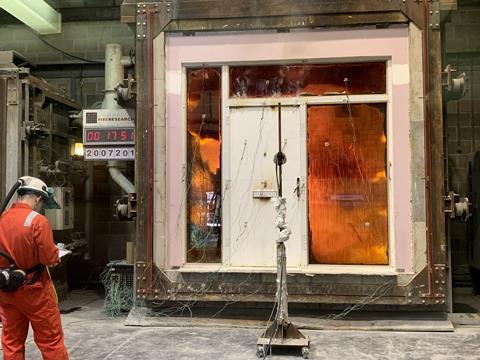
For safety-critical products such as fire doorsets, independent third-party accreditation provides an essential safeguard of quality and compliance. Accreditation confirms that a doorset has been rigorously assessed against the relevant standards, and it also requires ongoing checks to ensure that the same components and methods of construction are consistently used in production.
In the UK, the British Woodworking Federation’s Fire Door Alliance strongly advocates the use of third-party certification. The sector’s leading scheme is Warrington Fire’s Certifire, while other recognised programmes include BM TRADA Q-Mark, IFC Certification and UL Solutions. Any organisation operating an independent accreditation scheme should itself be registered with the UK Accreditation Service (UKAS) to guarantee impartiality.
The certification process begins with testing at a UKAS-accredited facility, following either the British or European classification route. The demands of the process are strict. Under Certifire, for example, if a doorset performs even a single minute below its declared fire-resistance rating, the shortfall must be investigated and corrective measures taken before certification can continue. Where performance drops below 85% of the stated fire-resistance period, certification is automatically suspended. Any change to a product’s design also triggers the need for re-testing to confirm compliance.
Certification goes beyond the initial test of a product. It includes audits of the manufacturer’s processes, quality-control systems and manufactured products to ensure that production remains consistent over time. These audits prevent the practice of testing a fully compliant prototype while manufacturing inferior versions for sale. Follow-up inspections are mandatory at regular intervals, making third-party certification a continuous guarantee of performance rather than a one-off approval.
Getting the installation right
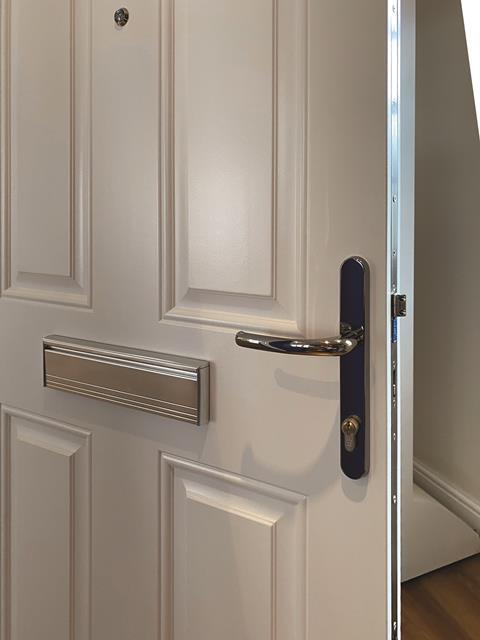
A manufacturer’s investment in testing and third-party certification only delivers value if the doorset is installed correctly. At present, there is no legal requirement for installers of fire doorsets to hold a formal qualification. However, training is available through organisations such as BM TRADA, and CITB, and some public sector contracts now stipulate that a proportion of installers must be formally trained – a precedent that private clients may also wish to follow.
One of the practical benefits of using complete doorsets is their relative ease of installation, which can reduce both time and cost. Responsible manufacturers will provide clear installation instructions, including details on tools, handling, and health and safety measures such as PPE requirements and the need for two-person lifts due to the weight of fire doorsets. The recognised standard for installing timber fire door assemblies is BS 8214: 2016. Good manufacturers should also be willing to support installers directly if there are queries about interpreting standards or fitting guidance. It is important to note that they will not endorse any installation that departs from their published instructions.
Even when installed correctly, the performance of a fire doorset can be compromised by seemingly minor changes. Adding hardware such as a letterbox, trimming the base of a door to accommodate flooring, or fitting hardware outside of allowable size limits undermine fire resistance and will potentially invalidate the certification. Damage from vandalism, or misuse such as propping doors open, poses similar risks. For this reason, the specification of a fire doorset must achieve two objectives: not only to deliver compliant fire performance, but also to provide clear, durable product and safety information that can withstand handover and remain useful throughout the building’s life.
Traceability
As the industry adapts to the golden thread of information, manufacturers are increasingly introducing traceability systems. These typically involve marking products with a unique identifier or digital tag that links back to the original specification. Fire doorsets will not be exempt from this trend. While such features may not seem immediately relevant at specification stage, they are invaluable for installers, facilities managers and building owners when making future repair or maintenance decisions.
In this new regulatory environment, comprehensive product information has become as critical as the product itself. Documentation such as installation manuals, declarations of performance, warranties, maintenance schedules and door labels or plugs – linked to unique IDs within the building’s asset register – must be treated as essential components of a compliant fire doorset.
The Fire Safety (England) Regulations make clear that poorly documented fire doors are not just an administrative issue, but a genuine operational liability during inspections. Looking ahead, the 2025 edition of Part B reemphasises the requirement under Building Regulation 38 to provide fire safety information at handover for buildings covered by the Regulatory Reform (Fire Safety) Order 2005 or the Building Safety Act 2022. In practice, this means the consistent provision of complete, accurate product data is rapidly becoming not just a legal requirement in higher-risk contexts, but best practice across all construction projects.
Redefining value – and values
By 2025, the specification of fire doors should no longer be reduced to a simple question of whether a product offers 30 or 60 minutes of resistance. The real measure of value lies in whether a fire doorset is part of a complete, defensible system – one that has been properly tested, can be installed with confidence, is backed by robust documentation and will continue to perform safely for years after handover.
This shift reflects more than compliance; it reflects a cultural change in construction, where safety, accountability and traceability are central to design and specification decisions. Specifiers who embrace this broader understanding of value will not only meet regulatory requirements, but also help create safer, more resilient buildings for the future.
Please fill out the form below to complete the module and receive your certificate.


